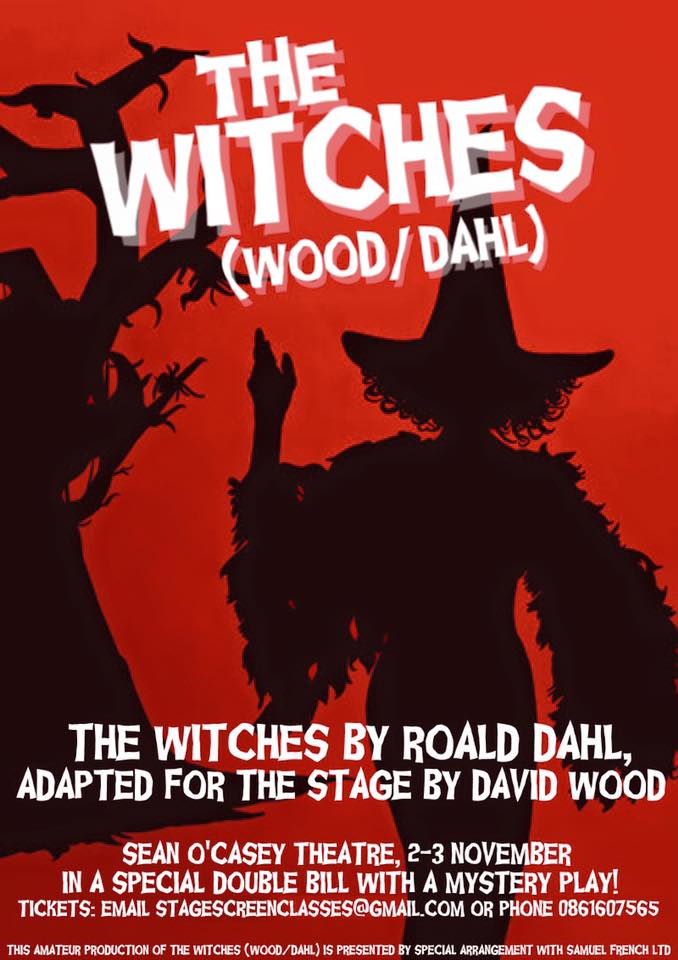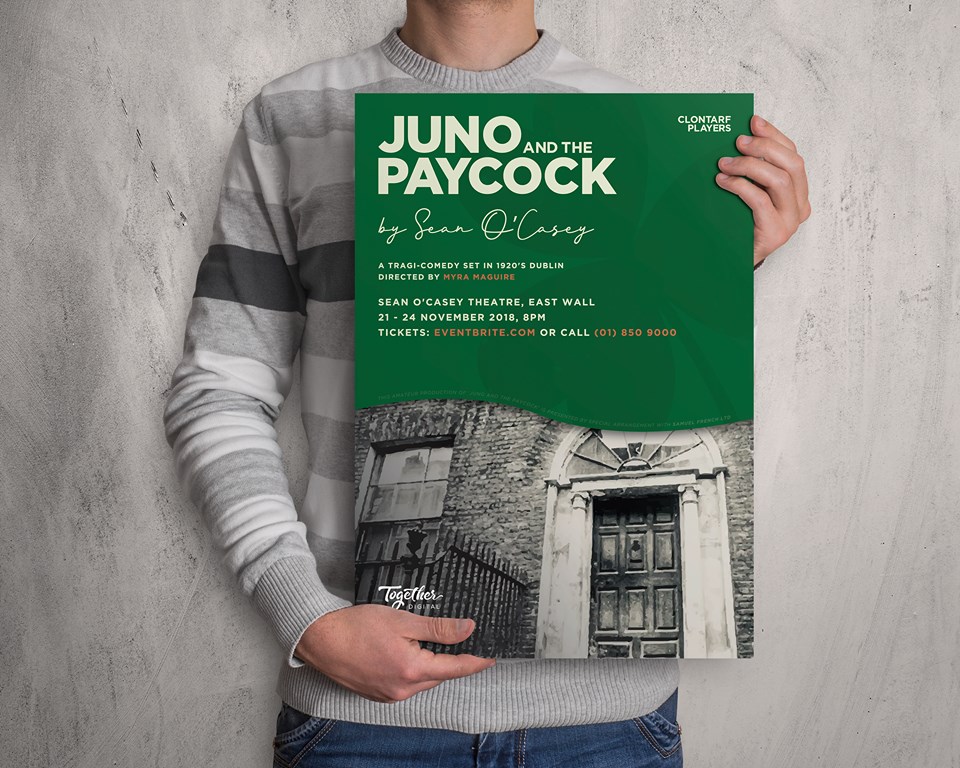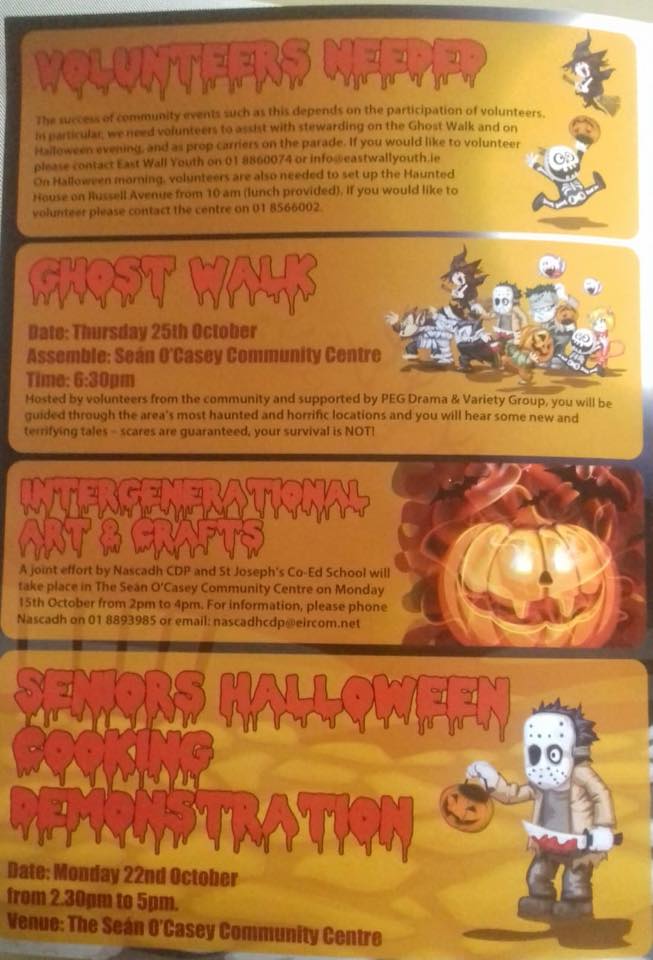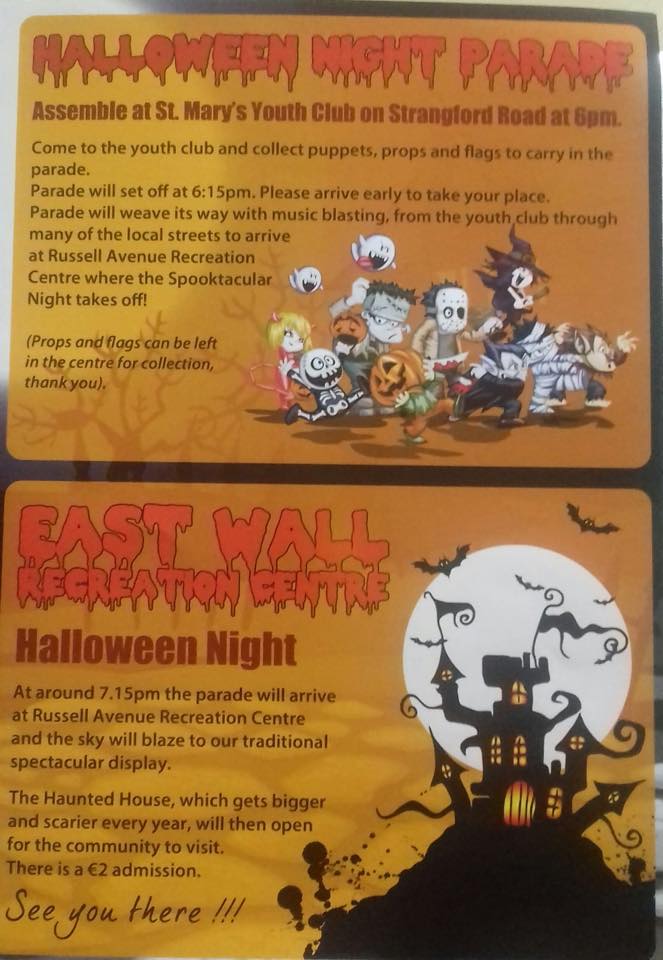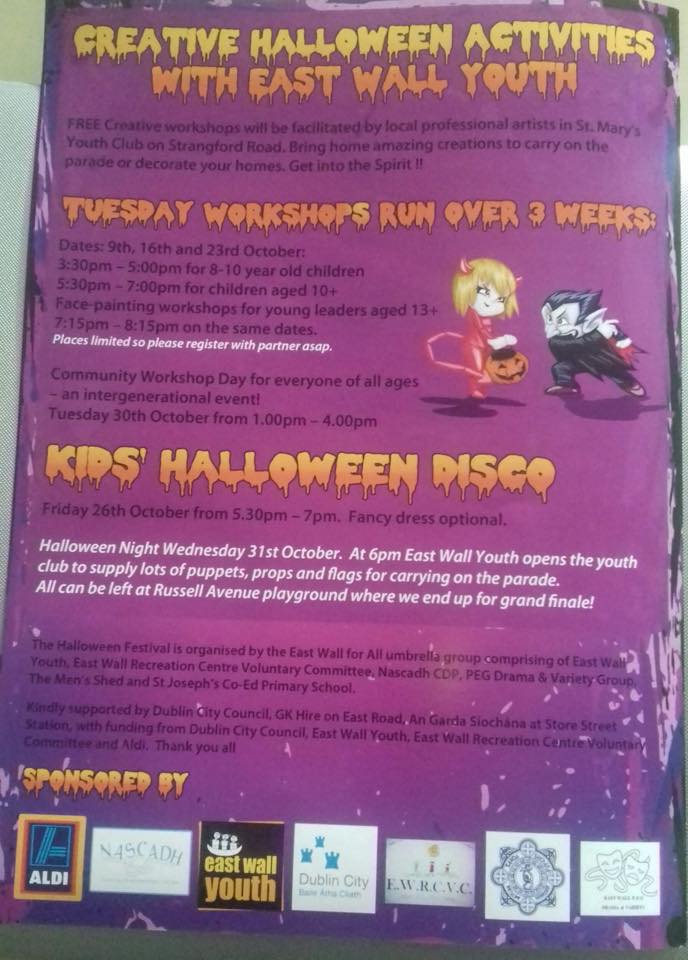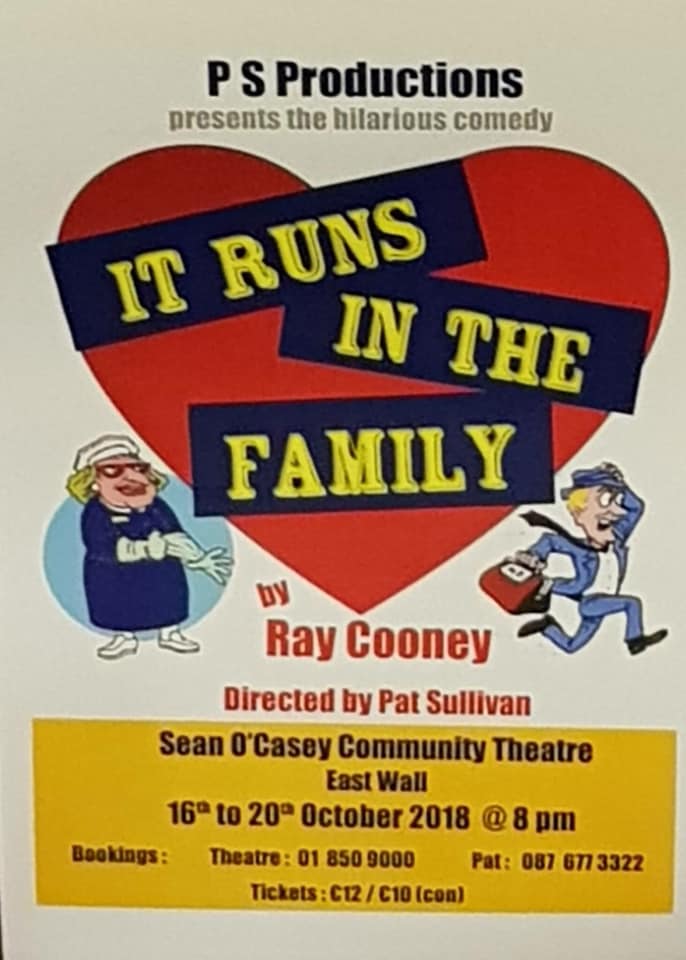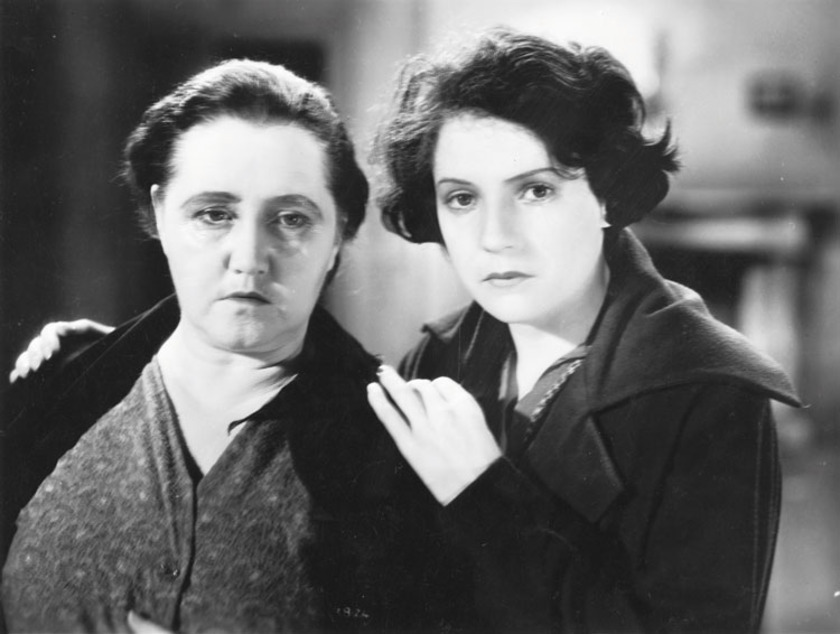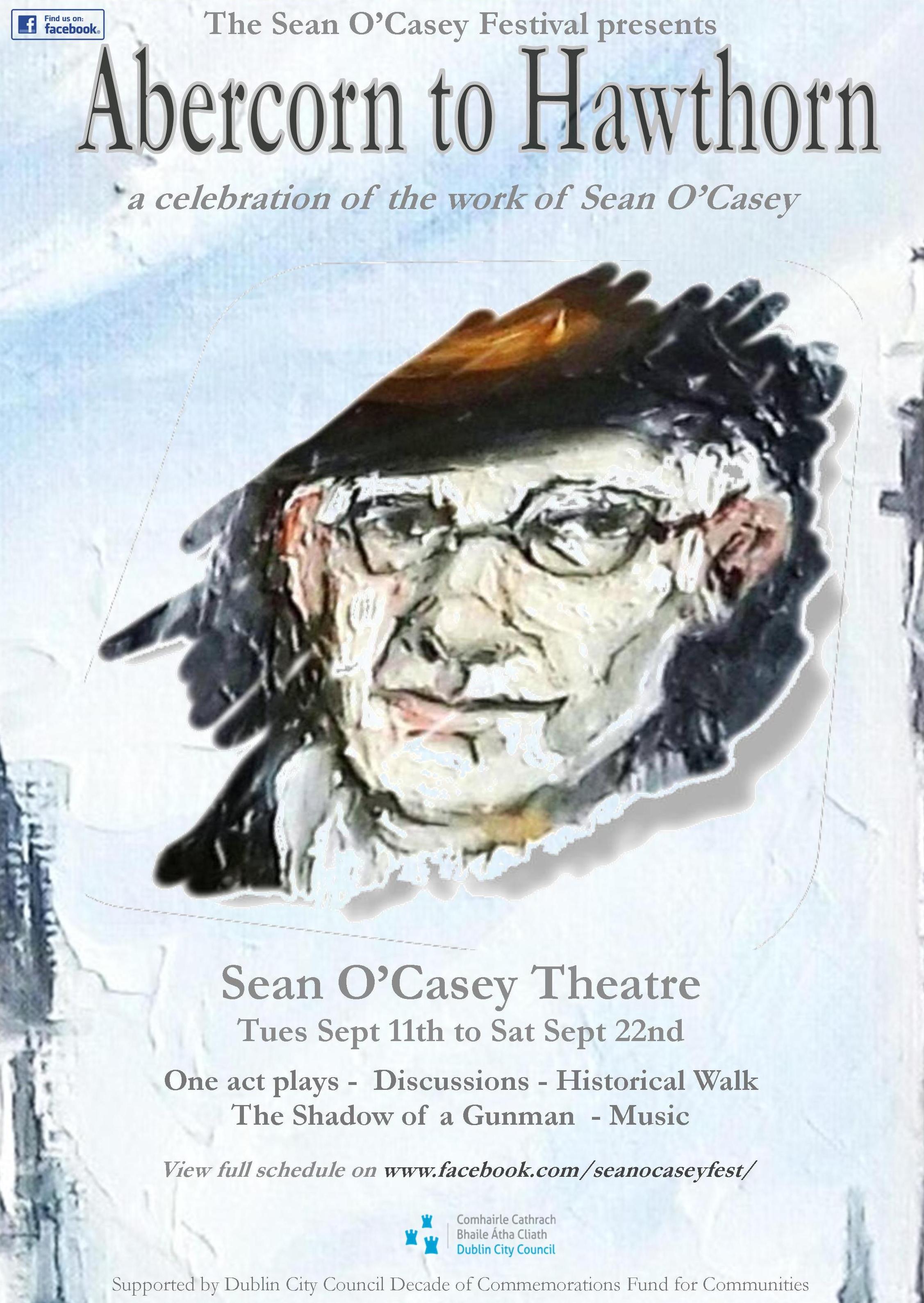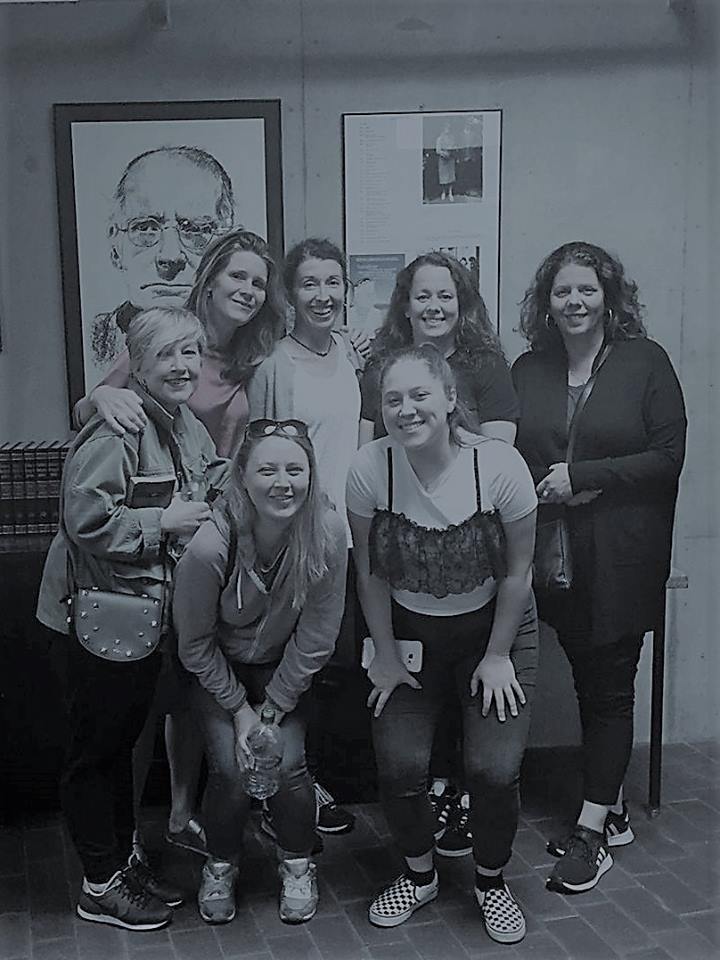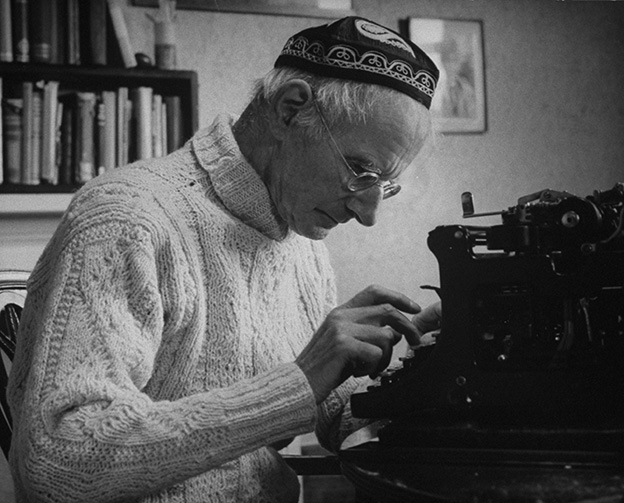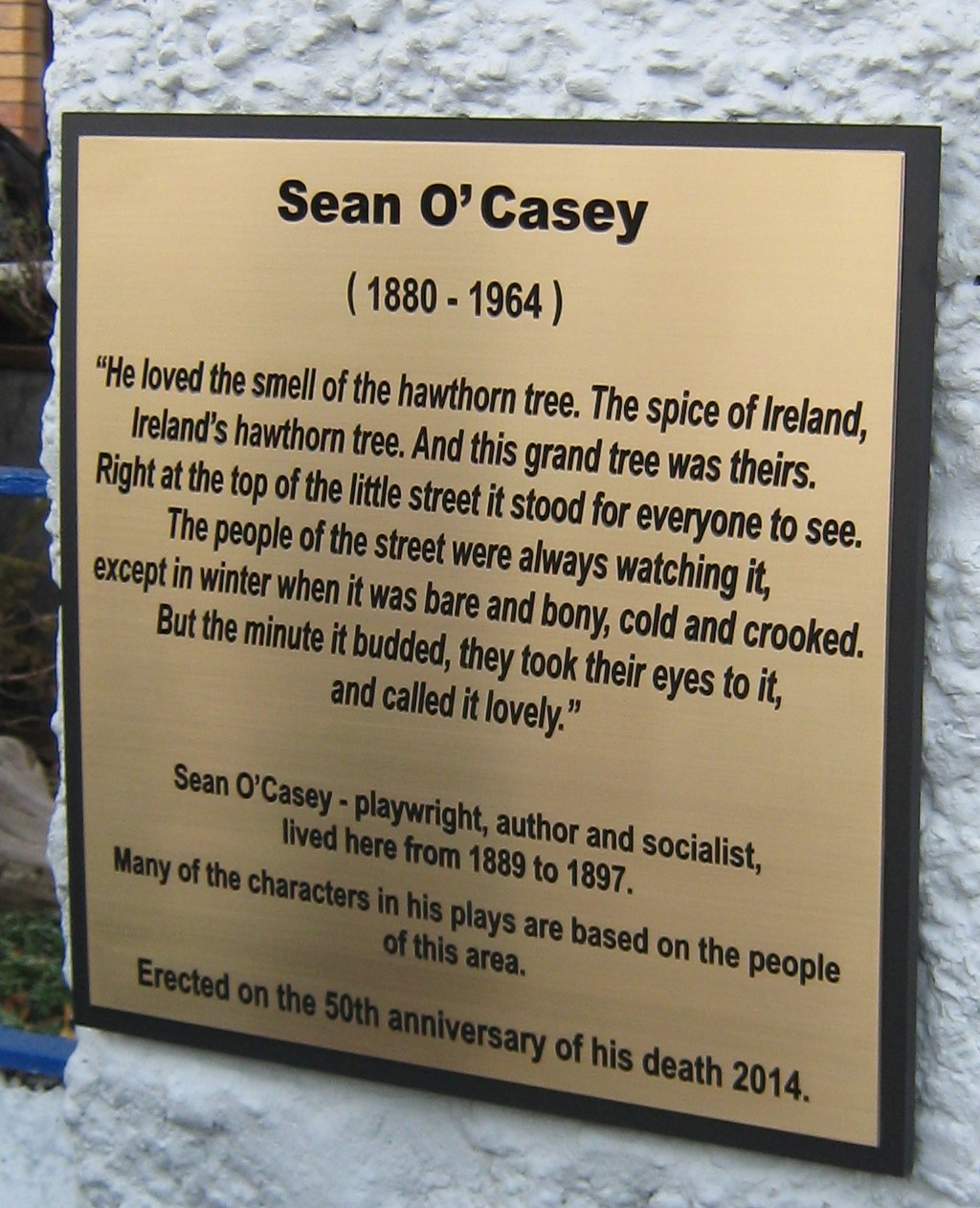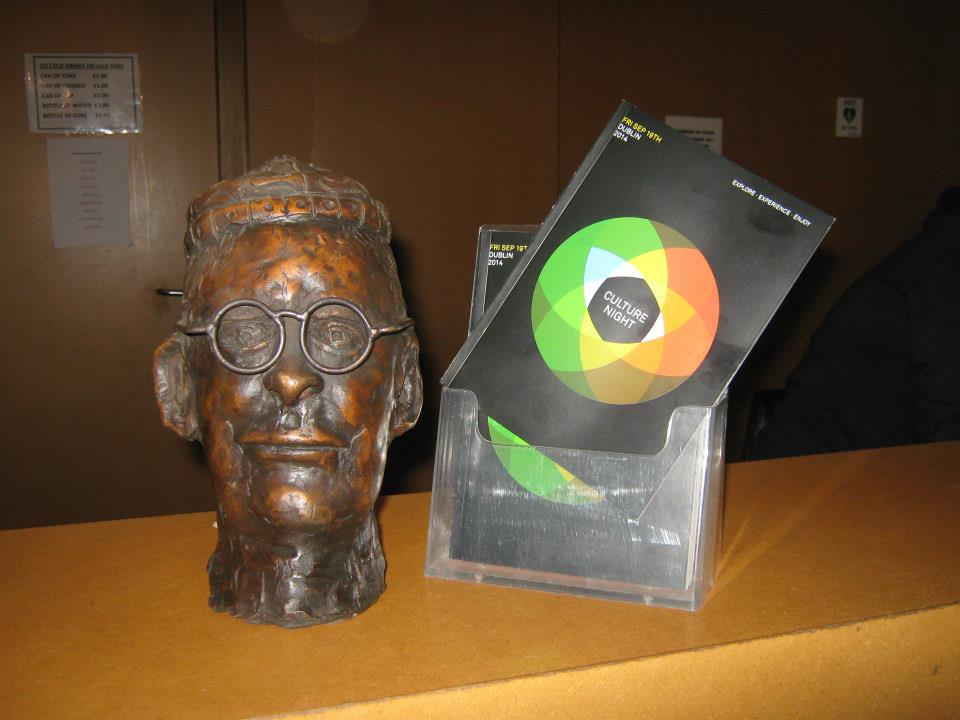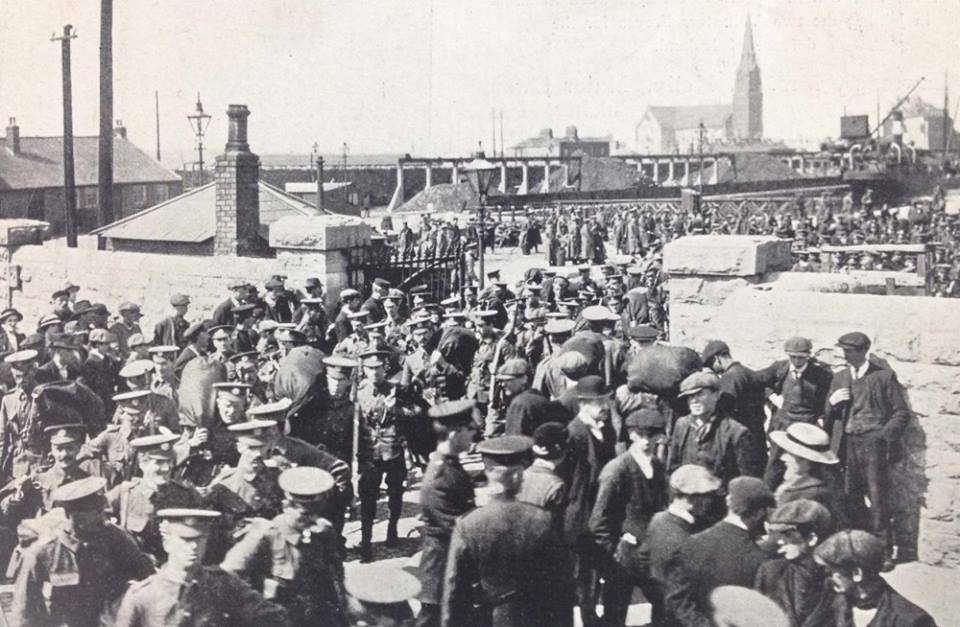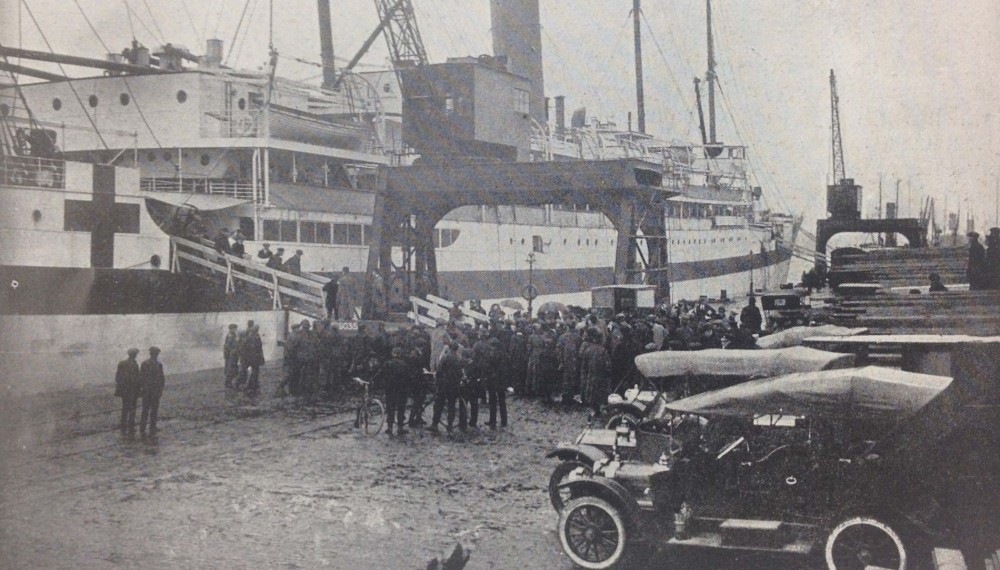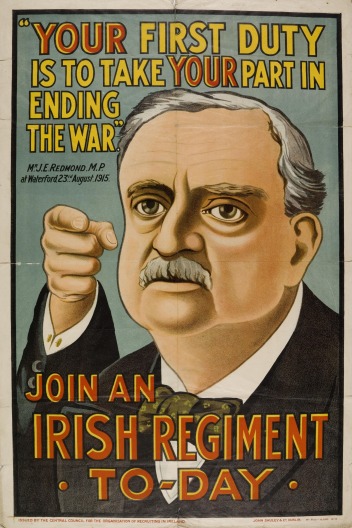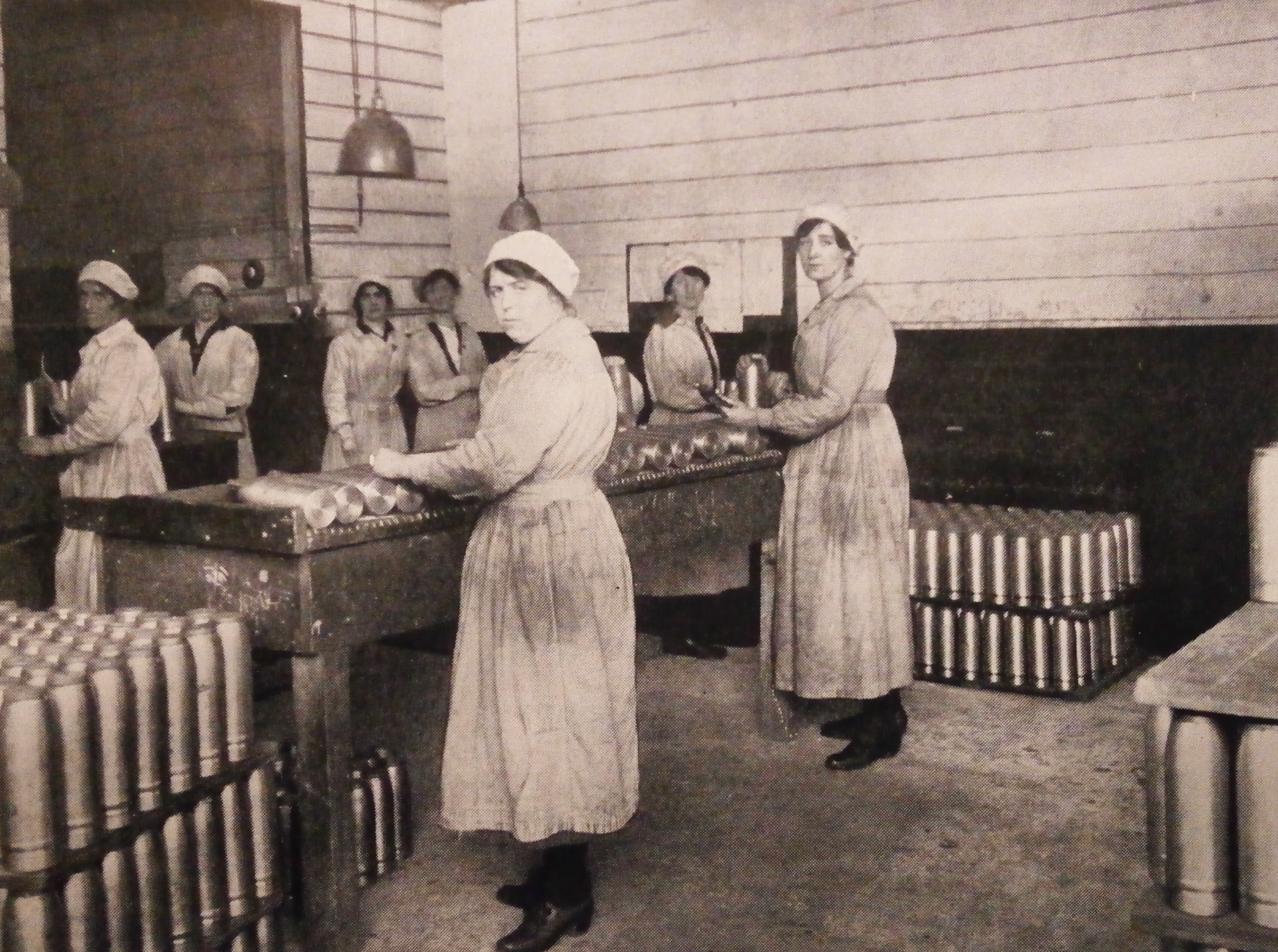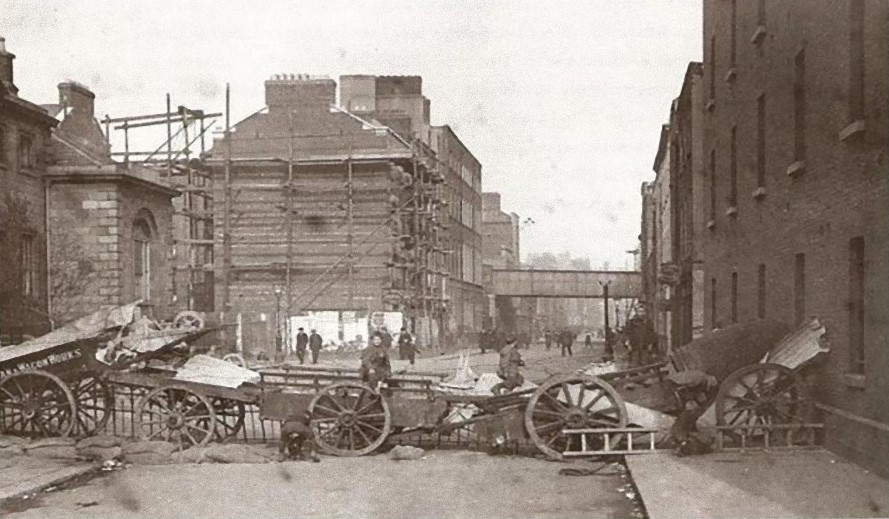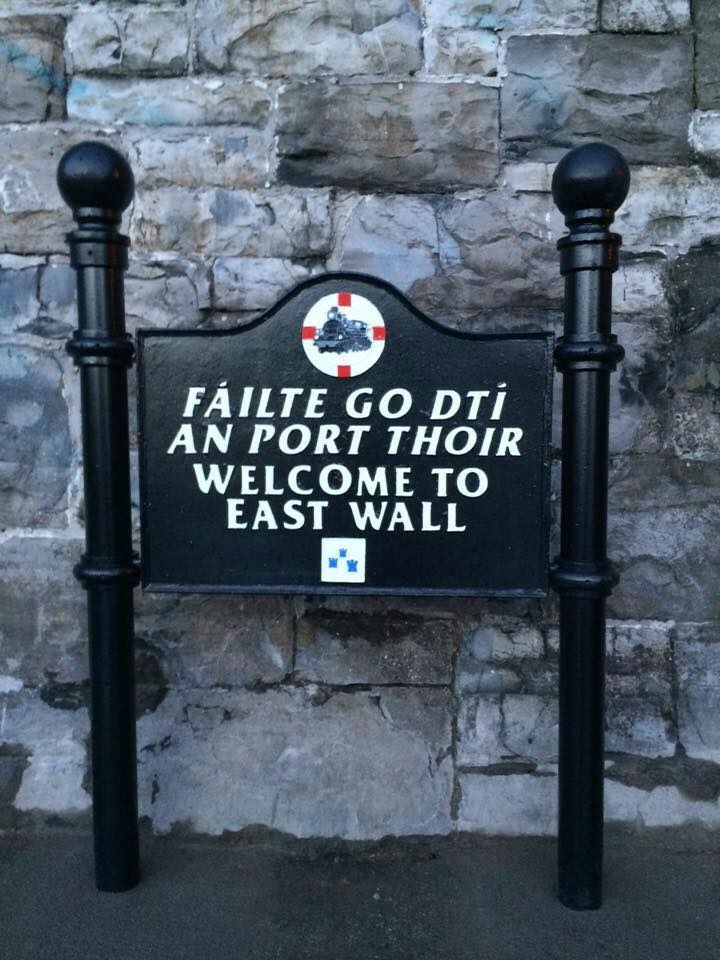Sep 09
“Take away our hearts o’ stone…” – Powerful Sean O’Casey monologues performed in New York
“It’ll have what’s far better- it’ll have two mothers”
Sean O’Casey is one of Ireland’s most famous playwrights , with his major works being as compelling today as when they were first performed almost a century ago. His most memorable characters are based on real life Dubliner’s he knew and observed , including many from the Docklands community. They are iconic figures , with Fluther Good and Joxer Daly being part of our cities culture . Another vital aspect of his plays is the role of women , not only central to the world portrayed but also providing a sensible and balanced attitude in the face of the often lazy, misguided and insensitive males. And none of his women characters are as powerful than Juno Boyle in “Juno and the Paycock”.
In July the Irish American Writers & Artist (IAW&A) event at the Cell Theatre in New York invited participants to perform a short Sean O’Casey piece for screening in Dublin . With no other guidance , three of the actors involved chose the same scene to perform , Juno’s heart wrenching and powerful monologue when she finds out her son has been shot dead . Earlier in the play she had callously disregarded her neighbours suffering when her son had died in similar circumstances (because he was on the ‘other side’). Originally played by Abbey star Sara Allgood in 1924 (who reprised the role in the 1930 movie version) , one fellow performer praised her skill : “her appearance literally compelled the audience to a frozen silence”. Here are all three IAW&A performances, demonstrating how the scene can be delivered in different manners but each reflecting the heartbreak and anger of a mother .
The Sean O’Casey Festival 2018 is the the first of what is planned to be an annual event and it is hoped that we can continue to work with the IAW&A and we’d love to see performers visiting our community next year.
Join us for the opening event which will be a celebration of “The women of O’Casey” , with an absolutely incredible line up of talent. All welcome .
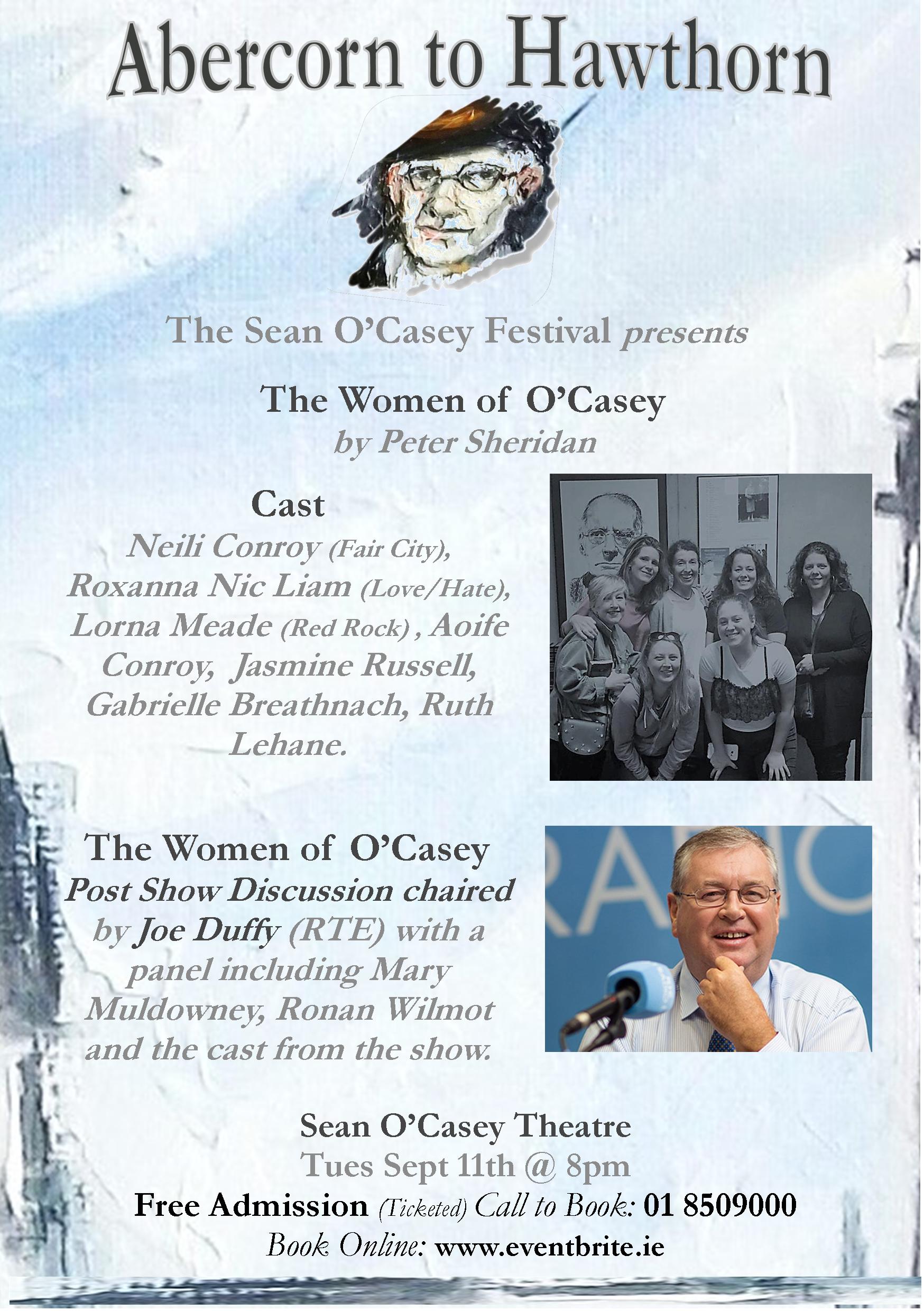 Thanks to John Kearns , the IAW&A and all the performers for this contribution to the Sean O’Casey Festival .
Thanks to John Kearns , the IAW&A and all the performers for this contribution to the Sean O’Casey Festival .
Sep 04
Sean O’Casey Festival 2018 : September 11th – September 21st
Sean O’Casey is recognized as one of Ireland’s greatest playwrights . He lived for 30 years of his life in East Wall and the North Docks , at Hawthorn Terrace and Abercorn Road. It was here that he lived through an exciting period in Irish history , and witnessed momentous events. But more importantly it was here his greatest characters were born – where he met the real life residents who would become the players in his dramas , where he would share their concerns & day to day tribulations ,hear their language, their slang , their turn-of-phrase and enjoy the unique personalities that could find humour at every turn .
This year , the Sean O’Casey Festival is coming to East Wall . Here is the full programme of events , a wide variety of performances, discussions ,film and a unique walking tour . The venue for all activities is the Sean O’Casey Theatre, St Marys Road , and are FREE except where noted.
Tuesday , September 11th @ 8pm
“The Women of O’Casey”
The Festival opens up with this star studded event , featuring a great mix of local and national talents. The evening begins with a performance of a piece inspired by the work of O’Casey and devised specifically for the festival by Peter Sheridan. The Women of O’Casey is performed by Neili Conroy (Fair City, Intermission) Ruth Lehane, Roxanna Nic Liam (Fair City), Aoife Conroy, Lorna Meade (Red Rock) Gabrielle Breathnach and Jasmine Russell.
The performance will include a post show discussion chaired by Joe Duffy (RTE Broadcaster and life long O’Casey fan). Other guests will include Mary Muldowney (Dublin City Council Historian in residence) , actor Ronan Wilmot and one of Ireland’s most recognizable stars Bryan Murray.
The evening will also feature the unveiling of a new painting by artist Tara Kearns , commissioned for the festival .
FREE EVENT , ALL WELCOME
The first week will continue with an opportunity to enjoy five of the great playwrights one-act plays. Rarely staged , this is a not-to be-missed chance to witness another example of the greatness of O’Caseys work , with rehearsed readings of these plays taking place over three evenings with a diversity of performers :
Wednesday 12th September @ 8pm
“Time to go” (Roxanna Nic Liam & friends)
“End of the beginning” (Brendan Conroy and Dairine Ní Dhonnchú)
Thursday 13th September@ 8pm
“Pound on demand” (Riverside Drama Circle)
“Hall of Healing” (Firedoor Theatre Group)
Friday 14th September@ 8pm
Bedtime stories”
“Hall of Healing” (Firedoor Theatre Group)
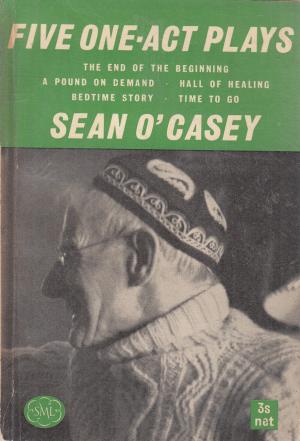 The comedy ‘The End of the Beginning’ and ‘A Pound on Demand’ were both published in 1934 as part of a collection of essays, verse and fiction. ‘Hall of Healing’ (described as a ‘Sincerious Farce’) ‘Bedtime Story’ and ‘Time to Go’ (a ‘Morality Comedy’) were written in 1951.
The comedy ‘The End of the Beginning’ and ‘A Pound on Demand’ were both published in 1934 as part of a collection of essays, verse and fiction. ‘Hall of Healing’ (described as a ‘Sincerious Farce’) ‘Bedtime Story’ and ‘Time to Go’ (a ‘Morality Comedy’) were written in 1951.
Saturday 15th September @7.30pm
“Under A Coloured Cap”
A screening of the film – “Sean O’Casey – Under A Coloured Cap”directed by Sean’s daughter, Shivaun O’Casey.
Featuring old footage and interviews with O Casey himself, his wife Eileen, his son Breon, his personality comes to life. Actor John Kavanagh is the voice of John O’Casey, reading from his autobiography and his letters. The film reveals O’Casey as a diverse, gifted and innovative artists who was way ahead of his time in his vision of what drama should be. Not to be missed .
The screening will be preceeded by an introduction from Professor Christopher Murray (UCD) , author of the definitive biography “Sean O’Casey: Writer at Work “.
(This screening made possible by the support of Shivaun O’Casey)
Sunday 16th September @ 2pm (note venue)
“In the footsteps of O’Casey”
Take a step back in time with the East Wall History Group & East Wall Youth Club for a stroll through the Docklands area … in the footsteps of the great playwright Sean O’Casey . Hear details of how a community developed on land reclaimed from the sea , how the workforce grew as Dublin Port and the Railways expanded and relive the story of the O’Casey family who lived here for three decades. See the houses where O’Casey lived, where he attended school and Church and also where his political beliefs and his artistic talents developed. We will meet a diverse selection of fellow residents from the past , including those who inspired the playwrights greatest creations, including some who did not appreciate this ‘honour’.
All welcome on this FREE walking tour , where some of our local youth will help bring history to life.
Assemble outside Lidl at the junction of East Wall Road / Church Road.
************************************************************************************************************************************
The second week will feature four performances of “Shadow of a Gunman” , the first of the playwrights classic Dublin trilogy , originally performed at the Abbey Theatre in 1923.
Monday 17th September – Thursday 20th September @ 8pm
“Shadow of a Gunman”
 A powerful and emotional piece of Irish drama,”Shadow of A Gunman” is as compelling today as it was when first produced . All tickets for this production are available at a special low price of only 8 euro .
A powerful and emotional piece of Irish drama,”Shadow of A Gunman” is as compelling today as it was when first produced . All tickets for this production are available at a special low price of only 8 euro .
Friday 21st September @ 8pm
The cap and the shawl
The Sean O’Casey Festival 2018 concludes with this very special Culture Night event where you can step back in time to O’Casey’s Dublin. Come along and view some O’Casey inspired art work and meet some O’Casey ‘characters’ who will share their witty ‘critical opinions’ with you . The evening will conclude in a traditional hooley in the house , an old fashioned sing song where all can join in .
************************************************************************************************************************************
The Sean O’Casey Festival 2018 is the first year of what is proposed to be an annual event , celebrating the work and legacy of one of our own , one of the greatest Irish playwrights of all time.
************************************************************************************************************************************
The Sean O’Casey Festival 2018 is supported by Dublin City Council Decade of Commemorations Fund for Communities.
Aug 04
Dublin Docklands at War : 1914 to 1918
“The Whole world is in a state of chassis”
Dublin Port in a time of War: 1914 to 1918
“…his Majesty’s Government declared to the German Government that a state of war exists between Great Britain and Germany as from 11 p.m. on August 4, 1914.” With these words Ireland, as part of the United Kingdom at that time would inevitably find itself involved in the global conflict that would continue until November 1918.
The consequences for Cities and Towns across the thirty-two counties would be profound over this period, but for Dublin Docklands and the surrounding community the effects were immediate.
Much of Dublin Port was immediately seized by the military, with the North Wall extension and the Alexandra Quay taken over completely on the day war was declared. There was some easing of this militarisation over time but North Wall Extension remained under military control for the duration of the war. Quay-side sheds were converted for use by troops and built onto, and a section of the boundary wall was removed to allow the rail line to be expanded. Troops, animals, vehicles and equipment would pass through here on the way to the battlefields of France and Belgium.
Just days after Britain entered the war it is reported that 50,000 people gathered on the Quays to wave goodbye to reservists heading overseas “most enthusiastic for England, singing and playing God Save the King, an unheard of thing hitherto”. Troop movement would become a two-way traffic as the injured, the maimed and horrifically scarred would soon arrive back via North Wall. This began as early as September, with the first ship carrying over 600 wounded men. An average of 400 would have been on these ships. A letter writer to the Irish Times in 1915 would ask “Cannot something be done before the next hospital ship comes to Dublin to improve the awful surface of the roadway down the North Wall? Its present condition is a disgrace to our city. The arrangements today at the ships side and at the various hospitals were admirable and worked with perfect smoothness, but the passage from the dockyard gates to Carlisle Bridge must have been an inferno for badly wounded men”.
In the early years of the war, within the Docklands (as in other working-class districts) recruitment was high. The motivation for joining up was varied. These propaganda posters are clearly targeted at different potential recruits. Loyalty to the King and Great Britain was certainly a factor for some; while many Nationalist recruits would have hoped that their service would be rewarded with home rule after a British victory. The Docklands suffered from grinding poverty, substandard housing unemployment and casual labour – joining the forces was paid well,dependents received a separation allowance and many employers could be expected to favour former soldiers,so ‘Economic conscription’ was rife.Additionally, some workers remained black-listed after the industrial dispute of 1913. There are some reports of 200 Dockers, apparently known as “The Larkinites”, who joined the 7thBattalion of the Royal Dublin Fusiliers. The DMP claimed 2000 reservists from the ITGWU had re-joined their regiments to fight in France at the start of the war and in 1916 Transport Union organiser William Partridge stated that over 8000 had joined up nationally by March of that year.
The earliest casualty from the Docklands we are aware of is 22-year-old William Regan; just three weeks after hostilities began, on 23rdAugust 1914. On this day, the Royal Irish Fusiliers lost 350 men at the Battle of Mons, Belgium, one of the first major engagements of the War. (Originally hailing from Cork, just over two years later his brother Thomas would die at Ypres,also serving with the Fusiliers).Many local employers enthusiastically supported the war effort. The London North Western Railway (LNWR) lost 13 staff associated with its North Wall Depot, killed in Europe.
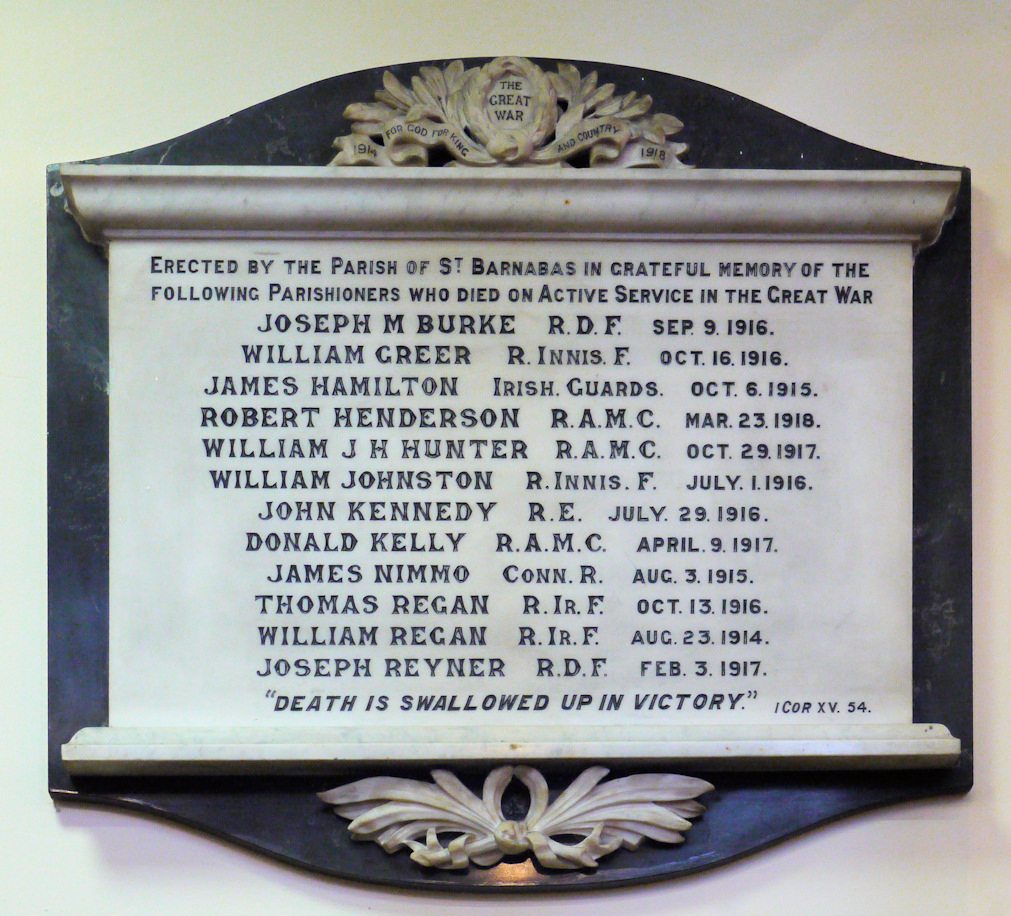 While military control and restrictions remained in place for the duration, commerce continued, and for some local industrialists, business would be booming. In 1902, the Scottish born ship builder John Smellie was part of an endeavour to reinvigorate the industry here. He established the Dublin Dockyard Company and by the outbreak of war this had developed into a major local employer. A repair contract with the Royal Navy was signed as early as September 1914. They were soon producing pontoon bridges, floating targets to train gun crews, fitting ship gun platforms, depth charges, wireless cabins, mine laying appliances, telegraph poles, among other war related work. They would eventually be repairing torpedo damaged ships following U-boat attacks.
While military control and restrictions remained in place for the duration, commerce continued, and for some local industrialists, business would be booming. In 1902, the Scottish born ship builder John Smellie was part of an endeavour to reinvigorate the industry here. He established the Dublin Dockyard Company and by the outbreak of war this had developed into a major local employer. A repair contract with the Royal Navy was signed as early as September 1914. They were soon producing pontoon bridges, floating targets to train gun crews, fitting ship gun platforms, depth charges, wireless cabins, mine laying appliances, telegraph poles, among other war related work. They would eventually be repairing torpedo damaged ships following U-boat attacks.
Smellie had an ambitious plan to develop an aircraft manufacturing company here, but while he received the necessary licences he had difficulty acquiring a landing strip and abandoned this scheme. Instead he established the Dublin Dockyard War Munitions Company. Between 1915 and early 1919 the factory employed 200 women (mostly local) producing 648,150 shells during this period. Other local industries would also benefit from the conflict – such as T. &C. Martin’s, Timber Merchants, who would manufacture boxes and crates for military use.
Easter 1916, the capital itself became a war zone, and Dockland residents would get to witness the horrors of combat first hand. Much of the North Dock was placed within a military cordon, and sniper fire and deadly machine gun bursts would become a daily threat. South of the River, Boland’s Mill was one of the main rebel garrisons, and some of the most intense combat of the week took place near to Mount Street Bridge. A small number of artillery shells were fired into both Grand Canal Quay and East Wall, and some tenements on City Quay shook so much from the booming guns on the Helga that they became unstable and dangerous to inhabit. Civilian casualties were significant in Ringsend, Pearse Street and in other residential areas on each side of the Liffey. The Dublin Port and Docks harbour master himself would have a narrow escape when his driver was shot beside him.
One of the other significant consequences of the war for Ireland and the Dublin Docklands was the use of submarine warfare. ‘Britannia Rules the Waves’ was no idle boast, and once war was declared Britain’s superior sea power was immediately put to use. A naval blockade of Germany was implemented , and by November the North Sea was declared to be a War Zone, with any ships entering doing so at their own risk. A British designation of food as ‘contraband of war’ was controversial, giving them greater opportunity to challenge merchant vessels and also signalling a clear intention to starve Germany into submission. Germany would soon respond in kind. Britain, as an Island nation was more vulnerable to such a tactic. However, they had anticipated their blockade would restrict the Kaisers fleet, and while this was the case for surface vessels, it was the aggressive deployment of U-Boats that would almost be their undoing.
This led to Germany formally declaring a policy of ‘unrestricted warfare’ on 4th February 1915. “Germany now declares the waters surrounding Great Britain and Ireland, including the whole of the English Channel, to be comprised within the seat of war, and will prevent by all the military means at its disposal all navigation by the enemy in those waters. To this end it will endeavour to destroy, after February 18 next, any merchant vessel of the enemy which presents themselves at the seat of war above indicated, although it may not always be possible to avert the dangers which may menace persons and merchandise”
It was in the context of this policy that Dublin Port ships were targeted. These attacks intensified in 1917. Among the vessels lost that year was the WM Barkley, the first of the famous Guinness fleet . On the 20th October, just hours after it had set out destined for Liverpool it was sunk with the loss of five crew members , including Thomas Murphy from number 36 Sheriff Street.
It was almost three and a half years after the declaration of war that the attacks on the SS Hare and SS Adela would occur. Of the thirty-six souls lost during that tragic Christmas season of 1917, seventeen of them came from the Dublin Dockland communities. This means that this period represents the single biggest loss of life locally during the Great War.
This article appears in “Within the seat of war …Dublin Docklands and the sinking of the SS Hare and SS Adela 1917…” published by The Adela-Hare Centenary Commemoration Committee , September 2017. Supported by Dublin City Council Decade of Commemoration Fund.
For further information, corrections, clarifications or to obtain the book contact adelahare1917@gmail.com
Aug 04
Biggest ever wrestling show in East Wall – 10th August 2018
The biggest and most important Pro-wrestling show to be held in East Wall takes place next Friday 10th August @ 7pm in the Sean O’Casey Community Centre . Featured performers will include British wrestling legend Doug Williams and East Wall’s own Darren Kearney who will be defending his hard won tag team championship . Don’t miss it , in a venue which is gaining a reputation as THE home for Irish Pro-wrestling.

 Tickets available here -
Tickets available here -
https://www.eventbrite.ie/e/fight-factory-pro-wrestling-episode-6-the-grapple-games-tickets-47319323370
Jul 25



